Interdepartmental Courier Service
Immediately after the end of World War II, the Emergency Supply Committee (Dutch abbreviation: CNV) in the Netherlands provided supplies to the last liberated parts of the Netherlands. In order to let the authorities in those areas know what to expect, motorcycle couriers were used to deliver letters with that information, labeled "by courier" ("per koerier" in Dutch).
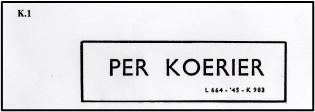
The intention was that the motorcycle courier service would be transferred from the Emergency Supply Committee to the PTT (Dutch Post, Telephone and Telegraph company) as of 1 August 1945. However, in early August there was a strike by the motorcycle couriers and the CNV announced that the motorcycle courier service would be discontinued as of 13 August 1945.
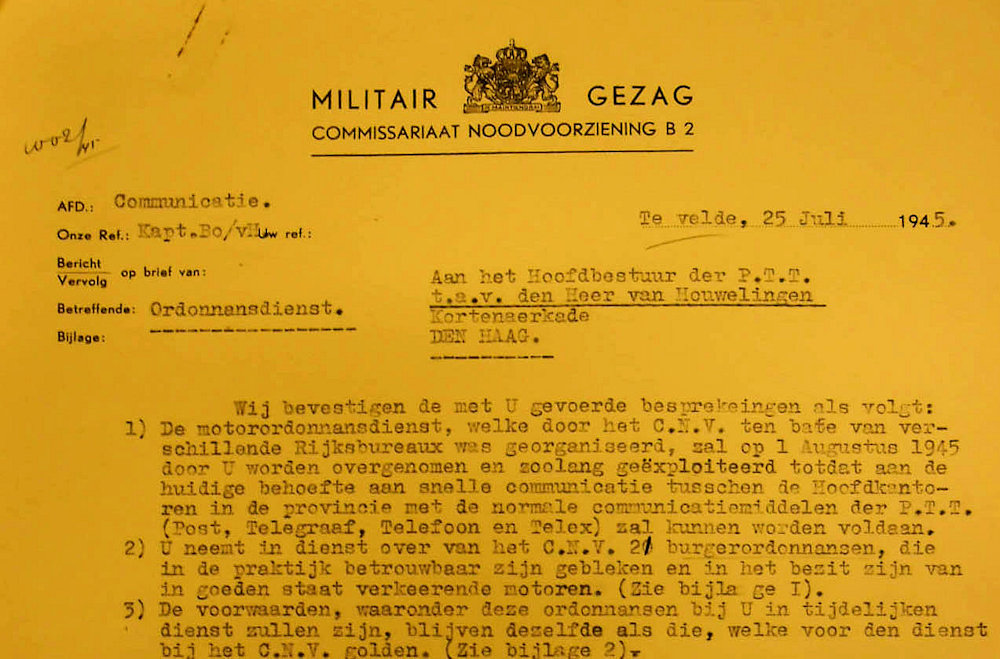
Courier service at PTT
In discussions between the CNV and the PTT it was decided that the latter would take over the courier service with the resources (read: motorcycles) from the CNV. This service was then only to be used for "service letters with exceptional urgency". The letters had to be provided with a paper slip "per koerier". The question is whether this was the same slip that was used for the letters from the CNV; in that case more letters should have been provided with this slip.
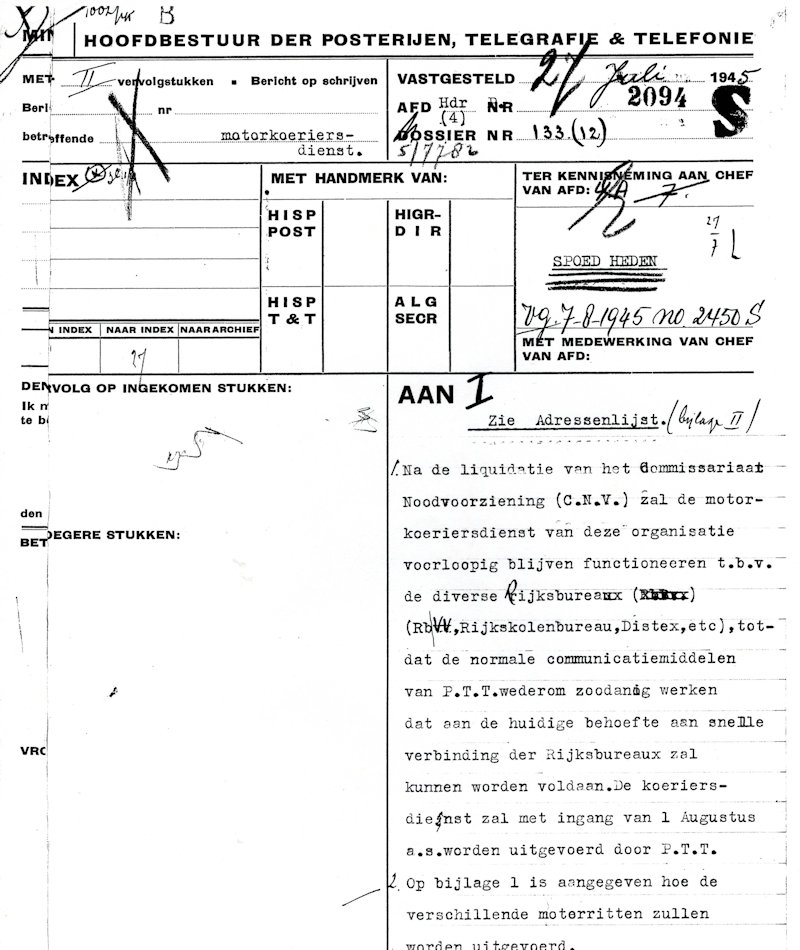
The various government offices had to submit the service letters, together with a cover note, to the main post office in The Hague, at the "Arrival" office at the entrance gate on the back of the building. If the office was closed, the letters had to be deposited in the letterbox.
The post offices in the north of the country had to arrange accommodation for the couriers, but the couriers had to pay for it themselves, and charge for refund later.
But probably things concerning the courier service did not go entirely to satisfaction. There were complaints that the PTT courier service was not sufficiently available, and there seemed to be doubt about the reliability of the staff given the wish: "that the delivery be done by trusted staff".

During the war, a group of Dutch people were supporters of the National Socialist Movement (NSB). Out of conviction or self-preservation? Many were called to account for their membership after the end of the war. But a large group was not. Doubts remained about their loyalty. Perhaps that also played a role in the call for reliable personnel.
Interdepartmental Courier Service
In the spring of 1946, the government developed plans to transfer the PTT courier service to an interdepartmental courier service under own management, under the responsibility of the Ministry of Finance. This ministry sent a letter to all ministers and department heads to indicate the wishes and the advantages and disadvantages of such a service.
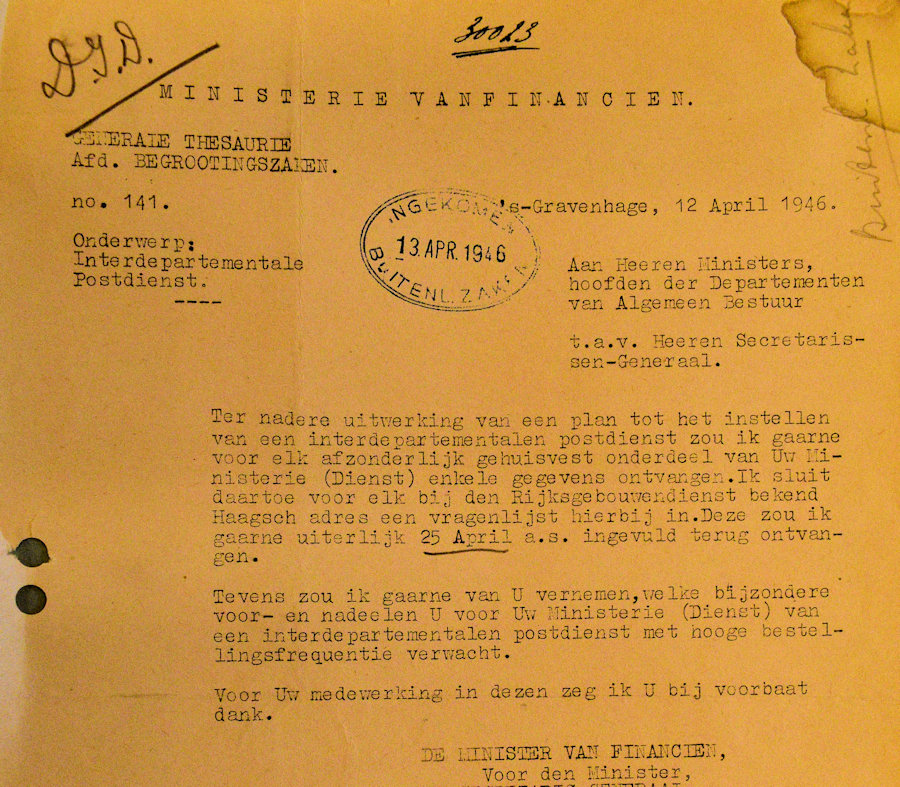
An estimate was also made of what the purchase and maintenance of motorcycles would cost. Whether BSA or Triumph were involved in the research is not clear. In terms of purchase price, they would fit the picture.
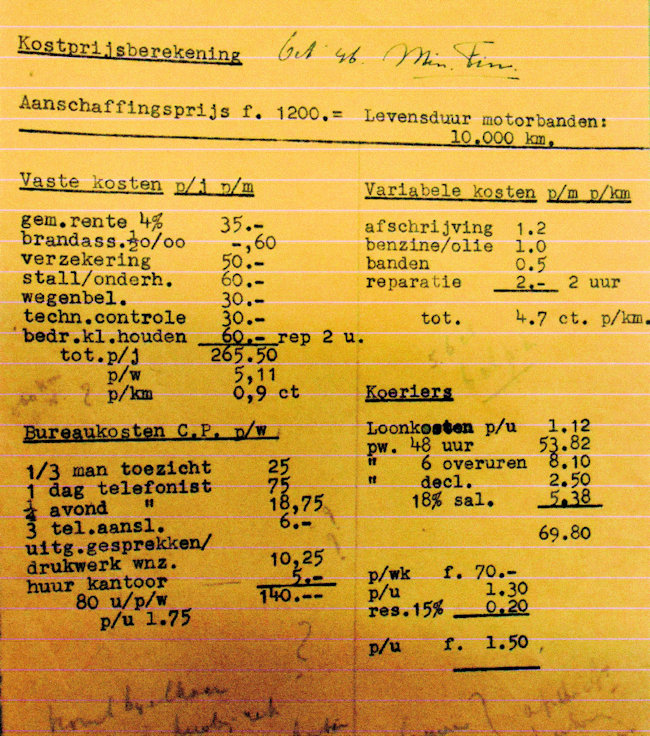
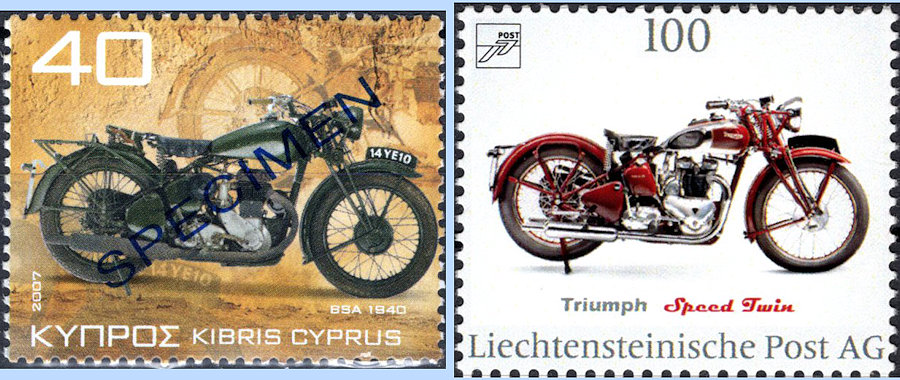
An inventory followed which (government) services would want to use the Interdepartmental Courier Service (IKD).
The IKD method would be twofold. On the one hand, it would serve as an extension of the existing postal service for non-urgent letters, and on the other hand, it would arrange for the delivery of urgent items by special motorcycle courier.
The Central Post (CP) would be housed in the building of the Ministry of Overseas Territories on Het Plein, entrance at the rear (photo left). The Courier Service would be operated by motorcyclists, under the supervision of the RAC (Rijks Automobiel Centrale - State Car Agency), where the motorcycles would also be parked (photo right).

After some preparation, the time had finally come and the Interdepartmental Courier Service was launched on 1 December 1946.
As mentioned, the service was divided into different working methods:
· Within the region of The Hague (at that time often called 's Gravenhage)
- Non-urgent letters by postal car
- Urgent letters by motorcycle courier
· Outside the region to the rest of the Netherlands
Extension of existing postal service within the region of The Hague
A postal car rode a fixed route and collected non-urgent mail, which had to be delivered the same day, from all affiliated addresses, and delivered it to the Central Post, Plein 1.

This mail had to be provided with one red Courier stamp. After that a courier delivered the letters in the region of The Hague. This region included The Hague, Loosduinen, Rijswijk, Wassenaar and Scheveningen.
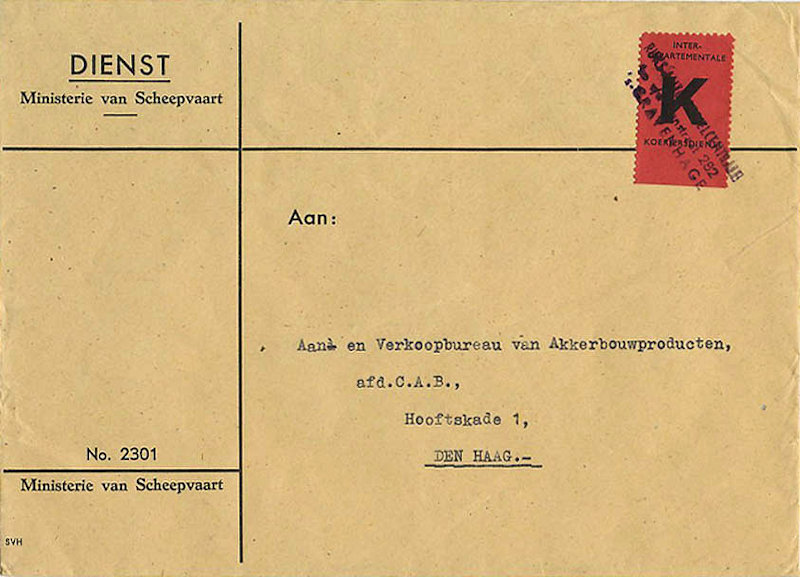

Delivery of urgent items within the region of The Hague
For this service, a special courier had to be requested by telephone from the Central Post (CP). The request had to include the address of delivery and the nature of the journey, for example whether an answer had to be awaited. This was necessary to make that the CP could combine orders and calculate when a courier was available. The letters had to be provided with multiple red Courier stamps, depending on the delivery method:
· letter delivered urgently: 2 stamps
· letter delivered urgently with confirmation of receipt: 3 stamps
· letter delivered urgently and awaiting an answer: 4 stamps

Letter with 2 stamps: delivery and hand-over only


Letter with 3 stamps: delivery with confirmation of receipt (collection A. Zonjee)
All stamps were cancelled with the round postmark "Inter. Dept. Koeriersdienst".
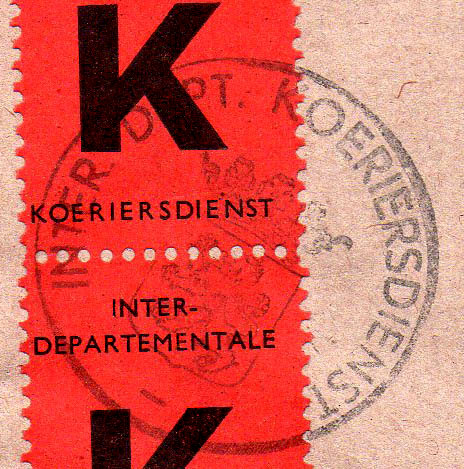
In addition to deliveries within the The Hague area, letters were also delivered throughout the Netherlands.
Outside the region of The Hague, throughout the Netherlands
Letters without urgency for addresses outside the region of The Hague, also provided with one Courier stamp, had to be sent by postal car and delivered to the main post office in The Hague, and were then further delivered by the PTT.
Urgent letters to addresses outside the region of The Hague had to be reported to the CP and were collected there. If multiple letters had to go to the same address, they were put in an open envelope. All shipments to addresses outside the region of The Hague were provided with the correct number of orange Courier stamps according to the list of cities.
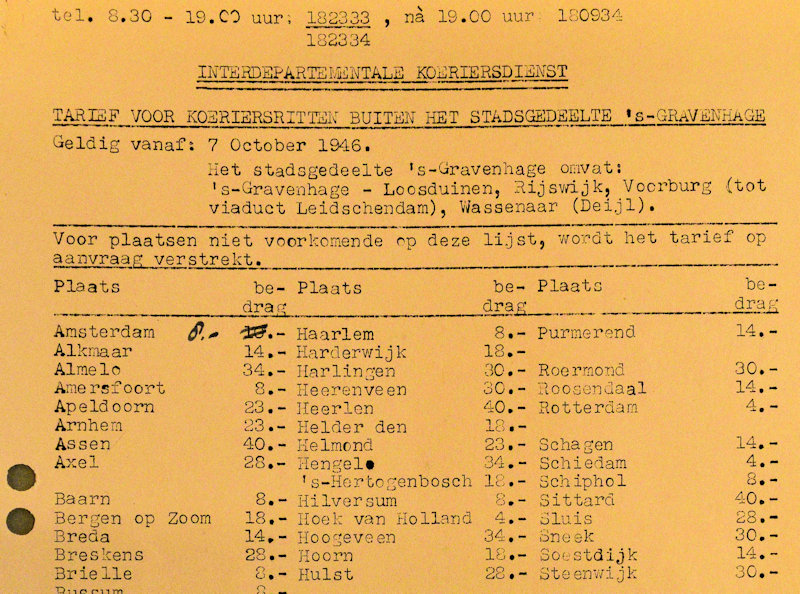
List of cities, with for every city the amount due, for example The Hague - Amsterdam: 8 guilders,
The Hague - Sittard: 40 guilders
The stamps could be requested (by telephone) from the CP. The Orange Courier Stamps for the rides outside the region were issued in 3 types: K1, K3 (3 times K1) and K10 (10 times K1). The K stood for kilometer. A booklet with 250 K stamps cost the Ministry 250 guilders. Therefore the price was 1 guilder per kilometer.
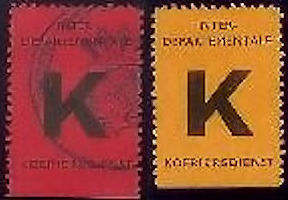
How the different types are recognizable is not clear from the found pieces. To pay the costs for the trip The Hague - Amsterdam, 2 K3 stamps and 2 K1 stamps had to be applied.
The motorcycle couriers drove exclusively with ride registration cards. Each addressee had to sign for receipt and note the time.

After an initial brisk start, the service developed favourably. From December 1946 until the end of 1951, the IKD operated as desired. But then, on 4 January 1952, a letter appeared from the General Treasury of the Ministry of Finance with the subject... dissolution of the IKD!!!

It appears that the IKD was used less over time, and the expected decrease in the number of employees at the departmental messenger and courier services did not occur. Further exploitation of the IKD was therefore not justified.

As of 1 February 1952, the Interdepartmental Courier Service was abolished. From that date onwards, it was still possible to have urgent items delivered via the existing taxi service of the Rijks Automobiel Centrale.
Nico Helling
Sources:
· KNBF Library Houten: Postzak xx volume Po & Po
· National Archive: Archive Main Board PTT
· H. van Dissel: Motorfietsen 1900-1960
· W.H. van Baarle: Slag om B2, herinnering in woord en beeld van het CNV (to be found on internet at the
Royal Dutch Librabry)
Top - Back to former page - Home |



















